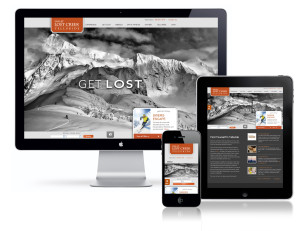
What does personalization really mean? You’ll be forgiven if you have absolutely no idea. As trendy catchwords go, “personalization” has become a go-to term for websites and online marketers, laden with all the possibilities of connecting with individual consumers and a departure from the limitations of a one-size-fits-all approach.
Nearly every online marketing vendor touts some form of personalization as the secret sauce for helping to target customers.
It makes sense. The potential of personalized online marketing, when done well, is enormous—and for that reason, it’s a compelling sell. The problem is, it hasn’t been done successfully thus far. And thanks to vendor hype and overpromise, just mention the word “personalization,” and most have learned to greet it with a healthy dose of skepticism.
But personalization isn’t just marketing hype. It’s a complex concept that really can live up to its billing. However, retailers, in tandem with their marketing vendors, must first identify what personalization really means—and what it means to their business and target customers.
Furthermore, when it comes to their websites, mobile sites, apps and CRM platforms, major e-commerce players need to realize that only through a customized combination of multivariate testing, optimization and personalization best practices can they truly begin to reach consumers with personalization that is effective and full of impact. There are no easy answers or instant solutions for creating personalization that works. It’s about evolution rather than revolution.
Defining Personalization
A truly personalized customer experience—what amounts to a custom website for every consumer—has been the Holy Grail of marketing for over a decade. Yet the very concept is conflicted, fragmented and confusing. Ask 10 marketers to define personalization and you’ll get 10 answers. You’ll also find that despite all the hype, the bar has been set low; most of these same marketers are hoping for nothing more than a few product recommendations or more effective targeting.
Even the experts don’t give us a whole lot of direction on personalization. According to Forrester, Web personalization is “creating experiences on websites or through interactive media that are unique to individuals or segments of consumers.” Just about as vague as every other definition.
In reality, every specific piece of information you can gain about your customer—from search information to online behavior and purchases—can be used to create a personalized experience. That means that your approach to personalization can be as simple (using one or two collected insights) or complex (a detailed formula based on multiple insights) as you want it to be.
With the right combination of technology, research and testing, e-commerce businesses can now deliver a personalized online experience that far exceeds anything that can be delivered in store—short of hiring a dedicated personal shopper. With the right personalization strategy and tools, companies can create an online equivalent of a brick-and-mortar store, where anything a consumer might want is located in a single aisle.
Technology Is So Personal
It goes without saying that your marketing team is comprised of geniuses, but a lack of imagination—and technology—may be limiting their vision when it comes to personalization.
Yes, they’ve thought about segmentation, recommendations and retargeting, but these techniques are only a fraction of what technology now allows. New sophisticated real-time automated SaaS solutions empower marketers to create personalized experiences that far exceed what was previously possible. With SaaS solutions working in tandem with strategy and implementation, companies can begin to move toward complex forms of personalization—and achieve online what is already being done offline with propensity modeling and other business analytics.
Really, knowing about low-cost SaaS solutions—and how to use them to take advantage of opportunity—might just be the most significant indicator of marketing genius.
Getting Started with Personalization
Once the right technology is in place, one of the best ways to employ personalization is with a set of “rules” that define parameters. These rules establish conditions for a specific visitor experience; for every insight gleaned, you create a more and more personalized experience.
Of course, rules don’t exist in a vacuum. When defining them, you must take into account known consumer behaviors, including the various stages that shoppers go through when making any kind of purchase and the fact that they may visit your site several times before actually pulling the “buy now” trigger. While this knowledge might seem to complicate your rules in the immediate term, it can be used to your advantage.
Sure, go ahead and create rules for first-time visitors, but you can and should also devise more complicated formulas that incorporate insights and data from previous visits and apply them to future visits. So, for example, retarget repeat visitors based on the last product they searched for during their last visit. This rule path can then be enhanced with complementary content or offerings, whether for discount on the searched product or an up-sell on similar items. It’s personalization that gives customers what they want and shows them that you value them—a must for creating relationships and loyalty online.
Keep in mind, however, that while targeting with rules is effective and often a great place to start, it does have its limitations.
Marketers will find it nearly impossible to manually define rules for expansive websites that have vast and diverse daily traffic. In this case, technology needs to be partnered with sophisticated behavioral targeting through mathematical models that enable you to predict the most compelling content and offers based on known insights and data points about each visitor. This type of model learns and adjusts dynamically over time to optimize visitor experiences with content that yields the highest conversion rate. This approach is also better for the broader range of content (product types, specific brands or destinations) that each individual receives based on unique predictive attributes.
Using Product Recommendations the Right Way
Want to see great personalization in action? Amazon continues to set the gold standard for best practices in personalization. The site has an unparalleled ability to recognize and deftly exploit consumers’ online browsing and buying habits. (Of course, it also has the advantage of customer interactions living entirely online, while most retailers have offline presences that dilute their ability to gather insights.)
Because of Amazon’s clear success, almost every major e-commerce site has taken steps to mimic Amazon’s highly successful interactions with returning customers. (“You were interested in XYZ, so you may enjoy ABC,” etc.)
But that doesn’t mean they’re getting it right. Everything from competing recommendations (you want shoppers to buy more, not different) or recommendations for products that are out of stock to a lack of testing and product reviews means that many recommendation programs are falling flat or, even worse, are counterproductive.
To offer successful personalization through recommendation, focus on the essential elements. Product recommendations should be placed on category pages, product pages and the shopping cart or basket page, with each page type getting its own recommendation formula and approach. This approach allows for more targeted recommendations and for segmented testing and optimization of recommendations. Recommendation content, placement on the page and the design of a promotion all play a role in the success of recommendations. Segmenting and measuring the conversion impact of every detail (e.g., images, fonts, colors, the number of recommended products, the placement on pages, and the recommendation model used) can help you identify the approach that yields the highest conversion rates for your visitors.
With a program for monitoring and improving recommendations, you improve the shopping experience for each customer—and potentially increase revenue and cart sizes.
Maximizing the Opportunity
Companies that have already successfully leveraged new SaaS solutions along with optimization and personalization strategies have achieved, on average, a double-digit increase in conversions. And with these programs becoming more common, consumers are going to be expecting a sophisticated level of personalization.
The good news is that with the SaaS-based model, companies can have personalization programs up and running immediately. Add in multichannel data from call centers and stores or branches, and they can create an organization-wide, cross-channel approach to personalization within a quarter.
There is no doubt that, after years of hype and hyperbole, we’ve finally found the holy grail of online marketing: Personalization.






